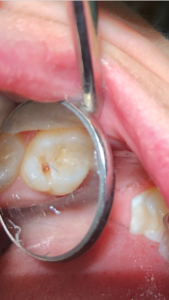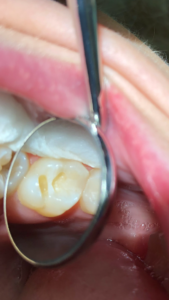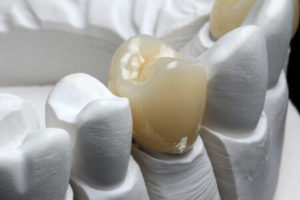Dental care doesn't have to be scary.
Having to undergo a procedure can sound scary, especially when you don’t know what is going to happen. Below are common dental procedures you or your loved one may need in your lifetime. Use this as a guide, but please don’t hesitate to give us a call. We’re always happy to walk through anything you’re unsure of.

Mouths are filled with bacteria, good and bad. When we eat sugar, some of the bad bacteria (S. Mutans in particular) thrive. As the bacteria metabolize sugar, they excrete acid which wears away the tooth’s natural defenses. Once this process makes it’s way into the tooth it’s called a cavity. There is currently no way to reverse this process so we rely on removing the bacteria and infected tooth to fix it. This is called a filling.
When you see your dentist for a filling, he will remove all the compromised tooth structure and replace it with a tooth-colored material. This material is a composite resin that will blend in with your natural dentition and you’ll leave with a healthier mouth.
A closer look at the process:



Image 1: Here you can see the cavity preparation in an upper molar. Note the amber colored decay.
Image 2: The finished preparation with all decay excavated.
Image 3: The tooth is filled with a composite resin that blends into the tooth and protects it in the future.
 Sometimes, you need to get a crown on a tooth. A crown is indicated if too much of your tooth’s original structure is missing, you’ve had a root canal, or if your tooth is fractured. A crown is a long term restoration that covers the entire surface of your tooth. Like a protective shield, a crown defends against the harsh oral environment.
Sometimes, you need to get a crown on a tooth. A crown is indicated if too much of your tooth’s original structure is missing, you’ve had a root canal, or if your tooth is fractured. A crown is a long term restoration that covers the entire surface of your tooth. Like a protective shield, a crown defends against the harsh oral environment.
During a crown appointment, the dentist will remove all infected tooth, and create a small reduction over the entire tooth(about 1-2 millimeters). This allows a laboratory to make a crown that looks very natural to help protect your tooth. After reducing the tooth, the dentist will take an impression for the lab, and you’ll leave that day with a temporary crown. About two weeks later, you’ll have an appointment to seat the permanent crown. Most crowns are tooth colored now, either made with ceramics, or ceramics fused to metal.
If you’re missing a tooth, sometimes your dentist will recommend a bridge. This procedure involves a crown preparation on the teeth that border the space, and a ceramic restoration is made at a laboratory and fitted a couple of weeks after the initial appointment. You can expect the bridge to look like your natural teeth and it stays in permanently. It is an excellent long-term restoration. Some other alternatives for a missing tooth are implants, or partial dentures. Talk to your dentist for more information on what is right for you and your mouth.
If you’re missing a tooth, sometimes your dentist will recommend a bridge. This procedure involves a crown preparation on the teeth that border the space, and a ceramic restoration is made at a laboratory and fitted a couple of weeks after the initial appointment. You can expect the bridge to look like your natural teeth and it stays in permanently. It is an excellent long-term restoration. Some other alternatives for a missing tooth are implants, or partial dentures. Talk to your dentist for more information on what is right for you and your mouth.
Still not sure?
We want you to have confidence before you start your procedure. Check out more information from the American Dental Association or reach out to us and we can schedule a call to review any questions you may have.

